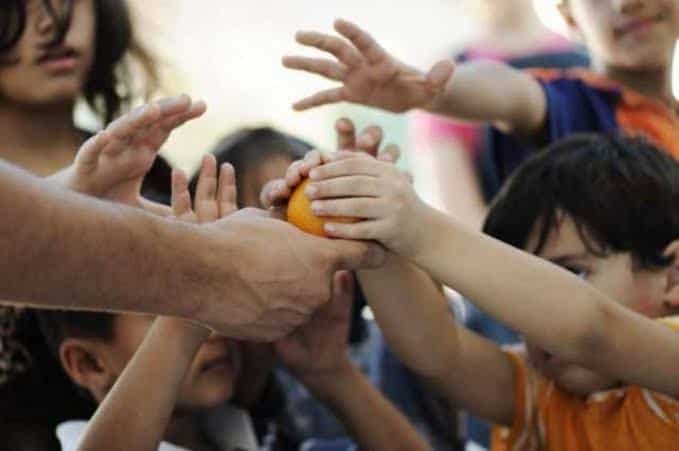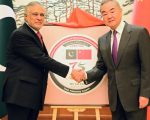By Hassan Imtiazi
According to Federal board of Revenue (FBR) there are more than 3,000 Non-profit Organizations (NPOs) and Non-Government Organization (NGOs) registered in Pakistan. Non-Profit or NGO’s working across various sectors right from health to education. These organizations are fulfilling the gap in the society where government is failing to deliver. Key examples, like Agha Khan Rural support program, Edhi Foundation, Shaukat Khanam Cancer Hospital, Akhuwat Foundation, The Citizens Foundation and Indus Hospital made a real impact in the lives of ordinary Pakistani.
A study conducted by Pakistan Centre for Philanthropy shows that Pakistanis give around Rs. 240 billion annually to charities. This figure itself is a huge number as a third world country masses contributing towards the good causes. It is also well-known fact that Pakistani’s are one of the generous nations in the world. 46% NGOs focus on education and research, 17.5% on civil rights & advocacy, 8.3% on social services, 7.3% on development and housing, 5.5% on culture and recreation, 6.1% on health, while professional associations are 3.8% and NGOs working on environment are only 0.2%. It is interesting to note that more than 70% of the population lives in rural areas, while more than 71% of NGOs have their bases in urban areas.
It was projected that 2021 Ramadan will see 10% increase in charitable giving and will reach to Rs.165 million.
Digitalization in NGOs increases
According to Global NGO technology Report, NGOs have increased their technology investments by 51% in 2019. Even in Pakistan, it has been observed that of majority Non-Profit’s using some kind of digital activities. NGOs are increasing their budgets for digital every year in order to keep in touch with the society, volunteers, and more focused on reaching wider audience to get their support. But lack of digital skill set and right resources within the sector are common barriers when it comes to launching digital campaigns by these NGO’s.
Since the whole economy is not prone to E-commerce as yet and with lack of payment gateways, limited understanding of digital within philanthropy, no formal training for NGO staff are main contributors of not going digital. Even traditional advertising agencies who used to sell TV, Newspaper advertising and Out of home (OOH) have to shift overnight to digital due to surge in demand from clients. Unfortunately, these marketing agencies are facing the same issues of skill set and trained people in digital.
With the Facebook reach of 40 million, some 11 million on Instagram with potential reach of 36 million on YouTube, digital content creation and distribution giving enormous opportunities for NGO’s in Pakistan to showcase their stories. We have seen last year during COVID-19 pandemic that The Citizens Foundation showed regular updates on daily/weekly basis as to how they are reaching out communities in remote areas and helping them through social media. This way, TCF supporters across the globe connected with the charity on a regular basis and supported the cause. This year The Citizen Foundation has seen substantial increase in digital across all regions, especially many folds increase in online donations from Pakistan. This has happened with integrated marketing approach and digital first culture within the organization.
“The Citizens Foundation is a global movement of individuals who believe that every child has the right to be in a classroom and learn. Digital lies at the centre of all our marketing and communication efforts as it allows us to reach a much larger audience across the world. In the last 5 years, we’ve invested a lot of time and energy building our knowledge of digital platforms, creating donor journeys, understanding our audience and putting together strategies for our global digital fundraising campaigns. Yet, with the speed at which digital marketing and fundraising are advancing, we are only barely scratching the surface. There is still a lot to uncover and TCF is committed to it.” Ayesha Khatib, Head of Marketing at TCF Pakistan.
Charity giving behavior in Pakistan
In Pakistan, general trend of searching for Zakat related keywords increases just one week before Ramadan. Users start searching for terms like “when is Ramadan” and “Ramadan timetable”. These searches along with Zakat calculator, Zakat nisab and Zakat on gold users searching on Google to find out information and then researching on charities to give their Zakat. These upper funnel keywords are ideal to engage potential donors when they are at exploratorily stage of their donation journey. Online donor journey is complex and require a lot of touch points before anyone donate to charity. One trend is evident in Ramadan, that the last 10 days of Ramadan see more and more people giving due to odd nights and closer to Eid. NGO’s now need to integrate digital across all marketing activities. Donors are searching for good causes online to support with more transparency.
Pakistani’s contribute more than 1% of GDP towards charitable giving – majority of income comes in Ramadan as Zakat fund. Apart from giving religious fund (Zakat) empathy to support fellow citizens are reasons as well however, Sadaqah and Fitrana also popular funds during Ramadan. Furthermore, there is a huge potential for NGO’s not only increase their annual income through digital means within Pakistan but also go international to reach out Pakistani’s. More than 9 million oversees Pakistani’s contribute huge numbers when it comes to sending foreign exchange to the country as well as donations (zakat). With the growing number of youth in Pakistan, charitable organization also need to adapt the new ways to reach out these millennials.
Conclusion
Here are top 10 steps Pakistani NGO’s can take to start their digital journey.
1. Do SWOT and PESTEL analysis in-house or with the help of external agency.
2. Develop donor persona. Create donor segments to use for messaging purpose.
3. Start early – For example, campaign need to start at least 8 weeks before Ramadan.
4. Start small, then scale it.
5. Priorities themes and funds which can potentially attract right audience.
6. Have few steps in online giving, especially on website.
7. Allocate resources for digital (creative & campaigns).
8. Spend budget on social media on a regular basis.
9. Allocate resources for direct response campaigns on Google platforms.
10. Track conversion and learn from analytics and improve continuously.














